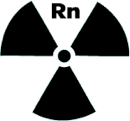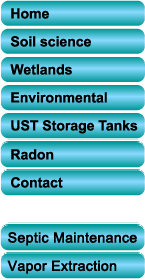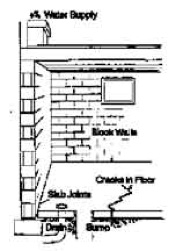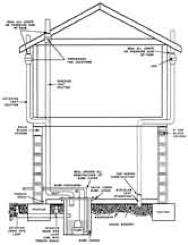Radon Remediation
Professional Geologists & Soil Scientists Providing Environmental Consulting Services

QUALIFICATIONS:
Scientists and Technologists:
Quantitative diagnostic analyses insure an initial success, no transaction delays, and optimal design resulting in maximum radon reduction. The President, Larry J. Giannasi is a state registered certified professional geologist and certified professional soil scientist, accredited in areas of remedial system design, development, and implementation for the control of indoor radon hazards.
Professional Construction Team:
More than 18 years of radon mitigation experience following all EPA guidelines to guarantee a safe installation while retaining aesthetics and real estate values.
Unconditional Guarantee to lower indoor radon levels to below the EPA action limit of 4 pCi/l.
Transferable Warranty to any subsequent property owner.
Certified by NEHA and registered by the EPA Radon Proficiency Program.
Insured, General and Professional Liability.

Radon Controls
A Division of GeoEnvironmental Services, Inc.
INDOOR RADON
RADON is a naturally occurring radioactive gas that is tasteless, odorless, and colorless. It is a normal decay product of uranium 238, concentrated sufficiently in many different types of rocks and soil throughout the nation.
Common Radon Entry Points
By now most homeowners and homebuilders are aware of the indoor radon problem. An increasing number of home sales are now contingent upon both a radon test and subsequent remediation if more than 4 pCi/l, the action limit established by the EPA, is found. Elevated radon levels have also been found in schools and other buildings throughout the nation.
Property owners and home buyers have had their awareness of radon raised by the media and through federal, state, county and university studies. The Surgeon General has warned that radon is the second leading cause of lung cancer in the United States. EPA and the Surgeon General recommend testing all homes below the third floor for radon.
THE ACCURATE SOLUTION
In cases where remediation is necessary, radon entry into the lowest level of the house or building should be prevented. This is where it is in contact with the soil and rock, the primary source of radon gas. As radon gas diffuses up through the soil it is pulled indoors through the foundation usually by negative indoor pressure. We install a sub-slab or sub-polymer ventilation system which integrates PVC pipes with a specialized in-line exhaust fan drawing the radon out from underneath the house or building and venting it to the atmosphere thereby preventing it from ever entering.
Sub-Slab Ventilation Systems
A sub-slab/sub-polymer ventilation system is the primary way shown to reduce elevated levels of indoor radon to below 4 pCi/l throughout the indoor environment.
Control of indoor radon at new building sites can be addressed through implementation of remedial methods that can be used during construction to minimize radon entry and facilitate its removal after construction is complete.
Installation of a radon reduction system will reduce potential exposure, save on costly post construction installation, and remove this encumbrance from any future real estate transaction.
APPLICATIONS
• Relocation and Real Estate Agents needing rapid response and a first time success, thereby preventing closing delays
• Builders who need a built-in system, guaranteed by a professional company, to pass on to their clients for marketability and transfer of liabilities
• School and Large Building Management needing expert remedial services from a company with experience in successfully remediating many schools and large buildings
• Homeowners who have radon problems and desire the security that their home has been remediated by the best that today’s technology has to offer
• Dehumidification of basements and other sub grade structures through vapor extraction













